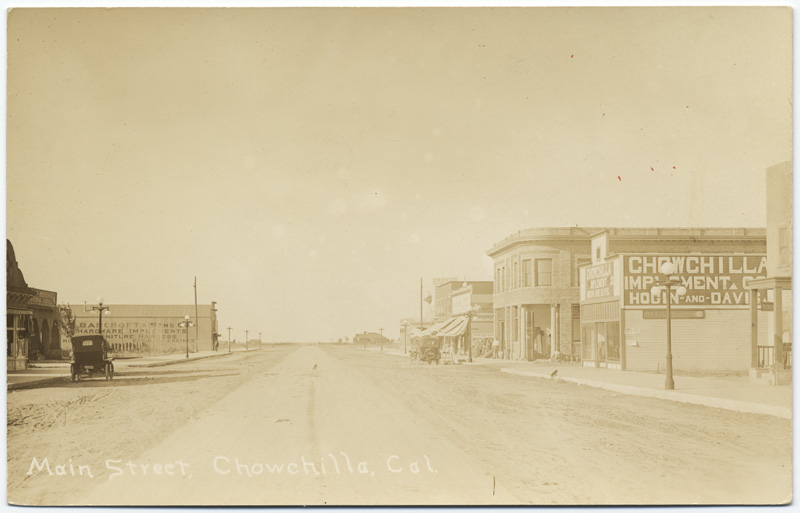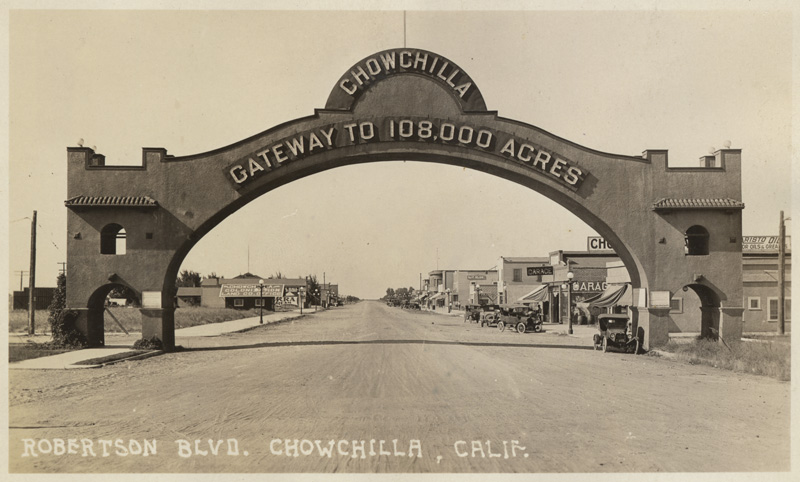Chowchilla becomes a city on February 7, 1923. Fifteen miles northwest of Madera in the Central Valley, Chowchilla embraces city hood almost 11 years after Pennsylvania-born developer O. A. Robertson buys the Chowchilla Ranch with the idea of subdividing most of it into small parcels for farming. Robertson is worth some $4 million at the time, made from other land ventures throughout the West.

He sinks his life savings into developing the new city of Chowchilla, named for the Indian tribe in the area. He considers the region ripe for growth – with the proper amenities. The northeast corner of the ranch is blocked off for a city. Robertson plans to build immediately. He purchases the ranch on May 22, 1912 and sets October 15 of the same year as the grand opening of his “planned community.”
Streets in town are laid out – as are more than 300 miles of country road, including the stately 12-mile palm-lined Robertson Boulevard. The first building erected is the United States Land Office Bank, part of Robertson’s United States Farm Land Company. Streetlights are installed. So is a water system and a 12-mile rail spur linking the city to the Southern Pacific mainline.
On opening day, there’s a rodeo and free barbeque lunch. Robertson’s advertising blitz lures 4,000 potential buyers. According to the City of Chowchilla’s website:
“The day was hot and dry, and according to those present, the beans were salty, causing many to drift to Tom’s Saloon at Minturn (six miles north) to slack their thirst. October 15, 1912 is still remembered as the day Minturn went dry.”
Robertson keeps buying ranchland to subdivide, causing the Chowchilla Arch, erected in 1913, to be amended to read 134,000 acres to reflect the additional purchases. Robertson overextends himself on Chowchilla and other development projects. The Great Depression wipes him out and he dies nearly penniless in May 1933.
Chowchilla, home to two state prisons, is best known for the 1976 kidnapping of 26 students, ages 5 to 14, and their school bus driver, Ed Ray. They are buried in an 8-foot by 16-foot moving van in a Livermore rock quarry. After 16 hours underground, they dig themselves out. The three men convicted of the crime – all in their mid-20s — are sentenced to life in prison. One of them, Richard Schoenfeld, is paroled in 2012.
TOP PHOTO: Robertson Blvd. Chowchilla, Calif. (State Library Image 2010-1846)
